Want to sew a handy little dice bag? This tutorial will show you how to make a lined drawstring dice bag with a circular bottom, perfect for storing dice, game pieces, or other small items. Plus, there’s a free pattern included! It’s a great project to improve your sewing skills, especially when learning to sew curves.
Why make a lined drawstring dice bag?
A few people asked if my simple round-bottom bag from last week could work as a dice bag for board games and wargaming. I love hearing your feedback, and honestly, I thought the same thing!
But here’s the deal: if you plan to store heavy items like dice, a lined bag is the way to go. It adds durability and makes the bag sturdier overall.
Free pattern and easy steps
So, I came up with this lined drawstring dice bag pattern. It’s super easy because I already had the math sorted out from the previous project.
The finished bag is about 4.5 inches wide at the bottom and 7 inches tall – just right for holding a good number of dice (though I can’t say exactly how many because I don’t own that many dice, but I used domino tiles for scale in the photos).
Whether you’re making it for your dice collection or as a thoughtful gift for a gamer friend, this bag is both practical and fun to sew!
Round bottom lined drawstring bag – use it for everything!
This round-bottom lined drawstring bag is a super versatile project! You can use it for just about anything – gift bags, storing charms, toiletries, jewelry, candles, yarn skeins, gaming dice, or even coins. Seriously, it’s perfect for everything!
One of my favorite things about this bag is that it looks just as neat inside as it does outside. Plus, the drawstring cords make it easy to open and close securely, which is always handy.
Why you’ll love this bag
Thanks to the flat, round bottom, the bag can stand up on its own, whether it’s full or empty. It’s sturdy and practical – ideal for everyday use or gifting.
It took me about 30 minutes to make this bag from scratch (just like the simple round-bottom bag), but if you’re new to sewing, don’t worry about the time! Focus on the process, and you’ll get the hang of it. By the second try, you’ll be sewing these up even faster!
Related: 50 easy sewing projects for beginners
Sewing supplies – lined drawstring dice bag
- free PDF pattern – ad-free version. Download below
- fabric – cotton, canvas, denim
- ribbon or cord – 2 pieces, each one measuring approximately 16 inches
- sewing machine
- needle
- matching thread
- sewing pins
- sewing gauge
- fabric scissors or rotary cutter
- iron
Finished drawstring dice bag size
Circle bottom – 4.5” diameter
5” tall from the bottom to the cords’ casing – and 7” tall in total
Note: All seam allowances are 3/8″ (unless otherwise noted) and are included in this pattern.
How to make a drawstring dice bag – simple step-by-step guide with pictures
Step 1
Here’s what you’ll need to cut for your drawstring bag:
- 2 circles with a 5″ diameter (1 from the main fabric, 1 from the lining)
- 4 rectangles measuring 8 1/8″ wide by 8″ long (2 from the main fabric, 2 from the lining)
Feel free to adjust the height of your bag! If you want it taller or shorter, just change the length of the rectangles to your liking.
Once you’ve cut everything, you should have the pieces shown below.
Related: How to make round fabric baskets (free pattern)
Step 2
Before you start sewing – if you want your bag to be extra durable, you can add batting or interfacing to the main circle bottom piece. I didn’t do this for mine, and it still turned out solid enough, but it’s totally up to you!
Now, take the lining pieces and place them right sides together. Sew along the long side (8.17 inches) using a 3/8″ seam allowance.
Tip: If you’re using non-directional fabrics like I did, it’s helpful to mark the sides with a fabric pencil after cutting. Just write “W” for width and “H” for height on each piece to avoid getting confused later.
The difference between the two might not seem obvious now, but it will be when you’re attaching the bottom circle!
For the main fabric pieces, do the same, but leave a small opening – the first 2 1/4” and the second 2 3/4” from the top of the bag. Backstitch at the beginning and end of your stitches.
Step 3
Press the seam allowances open and stitch them down around the small opening. This step is super important!
By sewing the seam allowance in place, you’ll prevent it from getting in the way later. Trust me, it’s the best way to avoid the safety pin getting stuck when you’re threading the cords through the casing.
Step 4
Line up the fabric circle with the bottom of the bag, and make sure you double-check the position of the opening. Don’t accidentally sew the top of the bag to the bottom! Pin it in place and sew around with a 3/8” seam allowance, both for the main fabric and the lining.
If you’ve cut everything right, the circle should fit perfectly – or close enough!
Make small snips around the edge of the circle bottoms (sorry, no picture for this part!). This step helps the curved seam lay flat and look nice once you turn the bag right side out.
Since this is a lined bag, you don’t need to worry about finishing the seams – there won’t be any raw edges showing in the end.
TIP:
Sewing curves is easier than it sounds! Think of the curve as a bunch of small straight stitches. Try adjusting your stitch length to 2.0 or 2.5 mm so you can go slower and stay in control.
As you sew, every few stitches, lift the presser foot and pivot the fabric slightly before continuing. This helps guide the needle around the curve smoothly. If you’re new to sewing curves, check out this helpful YouTube tutorial!
Step 5
Place the lining inside the bag, with the right sides together. Make sure the seams of the lining match up with the seams of the outer fabric.
Sew around the top edge using a 3/8” seam allowance, but don’t forget to leave a 3-inch opening in the center for turning the bag later.
Step 6
Reach through the opening at the top and turn the bag right side out.
Step 7
Tuck in the raw edges of the opening and topstitch about 1/4” from the top edge. For a neat finish, use a bobbin thread that matches the color of the lining.
Step 8
Now, let’s create the channel for the drawstring cords. On the right side of the bag, sew around the top about 1 1/2” from the edge.
Tip: If your sewing machine has a free arm, use it – it’ll make this step much easier!
If you’re a beginner and not sure what a free arm is, don’t worry! Take a look at this picture to see what I mean. Chances are, your sewing machine has one too, and it makes sewing small, round areas like this much easier.
Next, sew another row, this time 2 1/4” from the top edge. The spacing can vary depending on how wide your drawstring cords are, so adjust it if needed.
Step 9
You’ll need two drawstring cords for this step. Each cord should be about twice the width of the bag, plus an extra 2 or 3 inches.
Attach a safety pin to one end of the first cord and feed it through the casing. Once it’s through, tie the ends in a simple knot. Now, start from the opposite side of the bag and repeat with the second cord.
The goal is to have one loop and two ends of the drawstring on each side. That way, when you pull both ends at the same time, the bag will close up nice and tight.
How to make a BIGGER lined dice bag
Here’s what you’ll need to cut for a larger bag:
- 2 circles with a 7” diameter (1 from the main fabric, 1 from the lining)
- 4 rectangles measuring 11.31″ wide by 11″ long (2 from the main fabric, 2 from the lining)
Now, just follow steps 1-9, and you’re all set!
That’s it! I hope you enjoy making this lined drawstring dice bag. Happy sewing!
Let’s keep in touch! You can find me on Facebook, Instagram, and Pinterest.

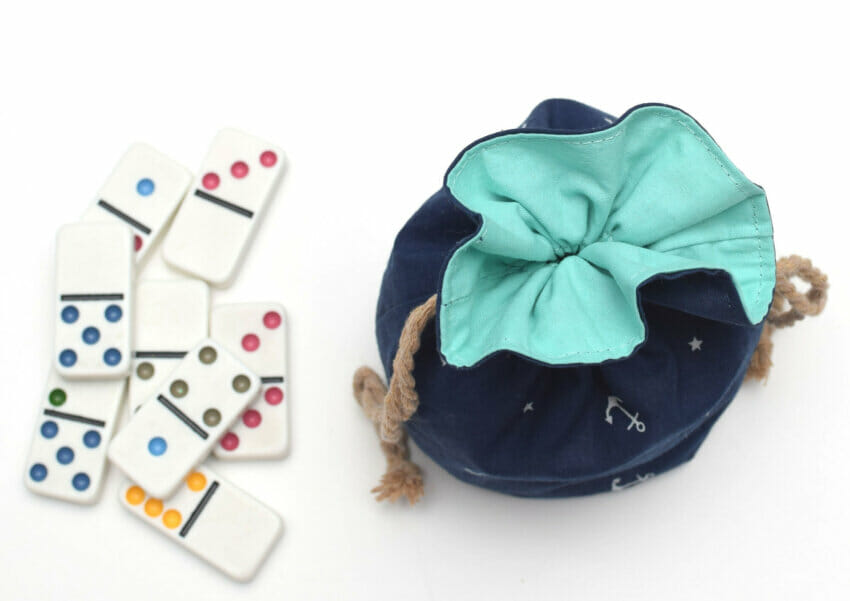
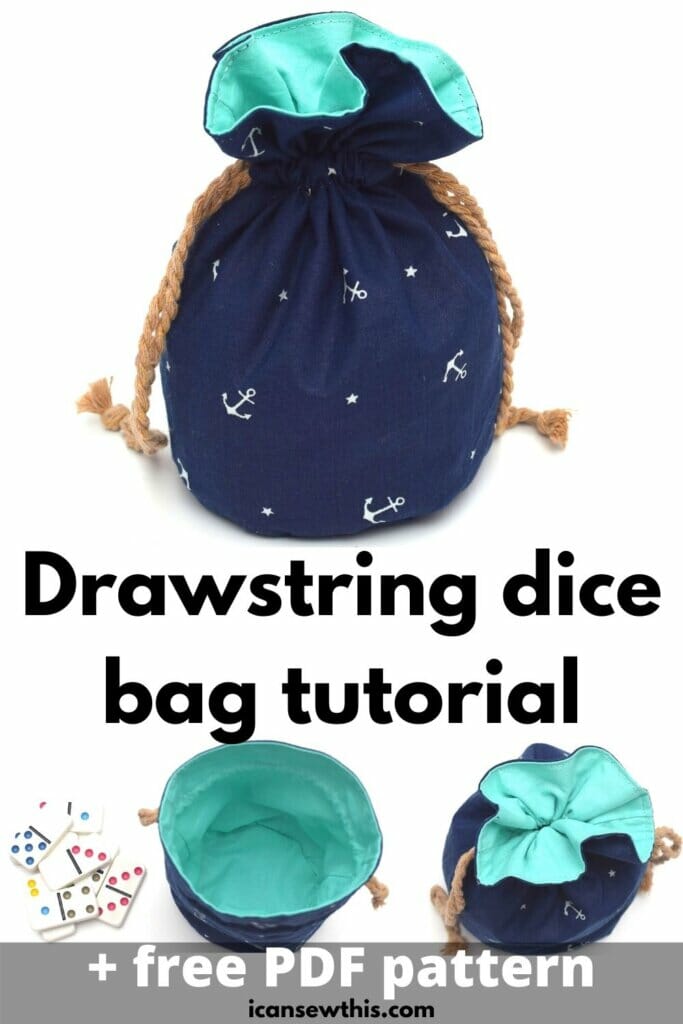
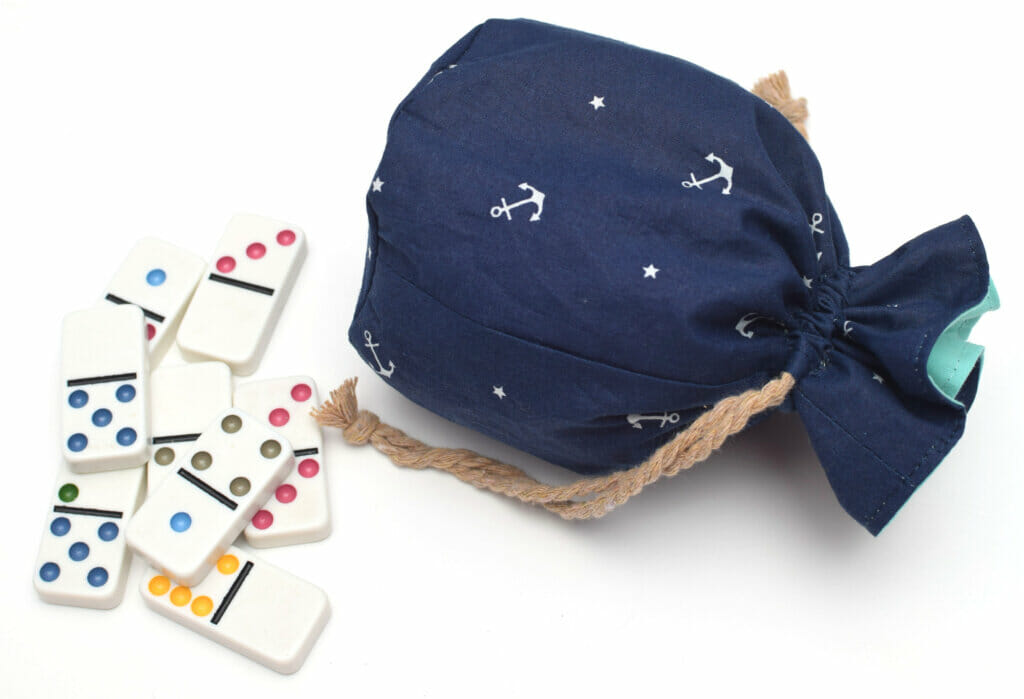
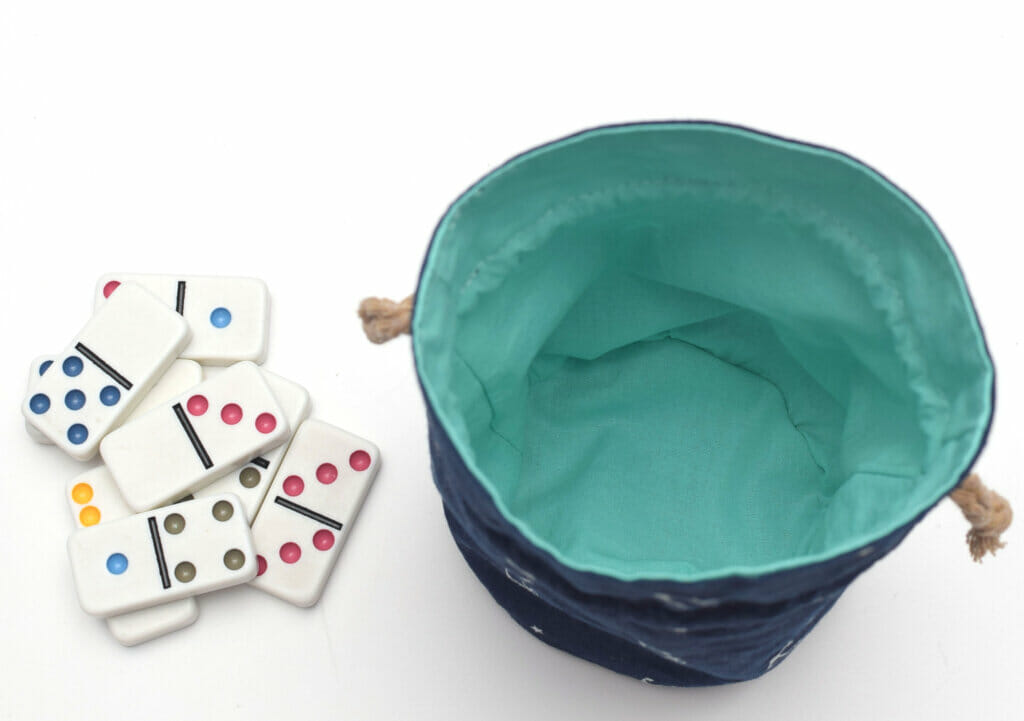
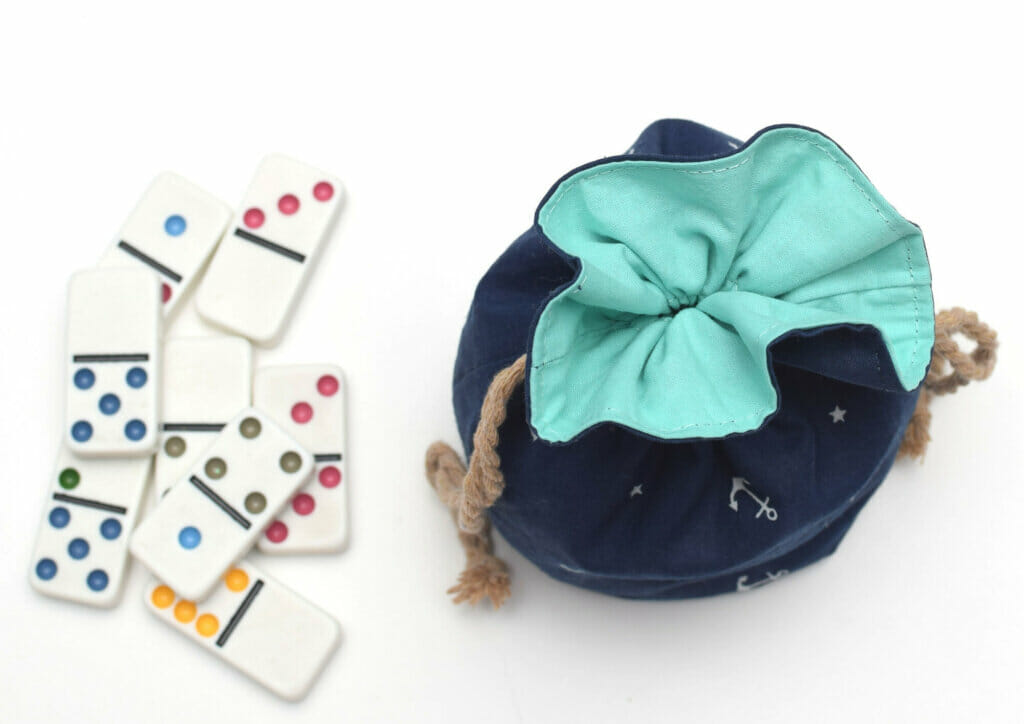
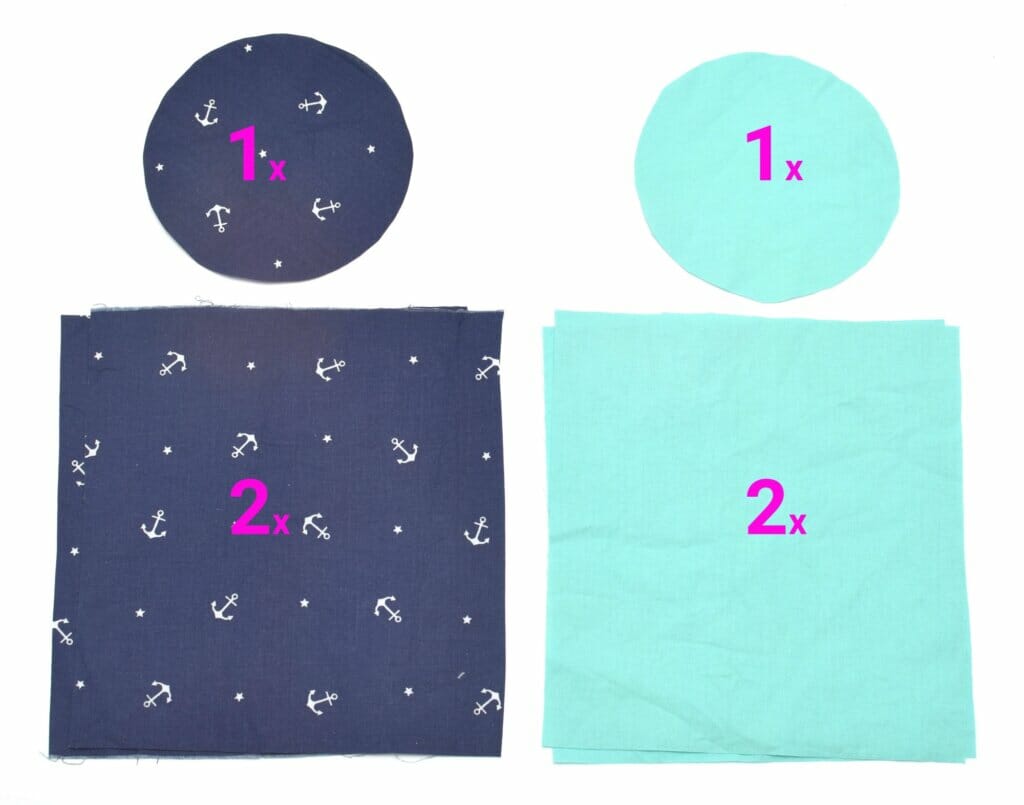
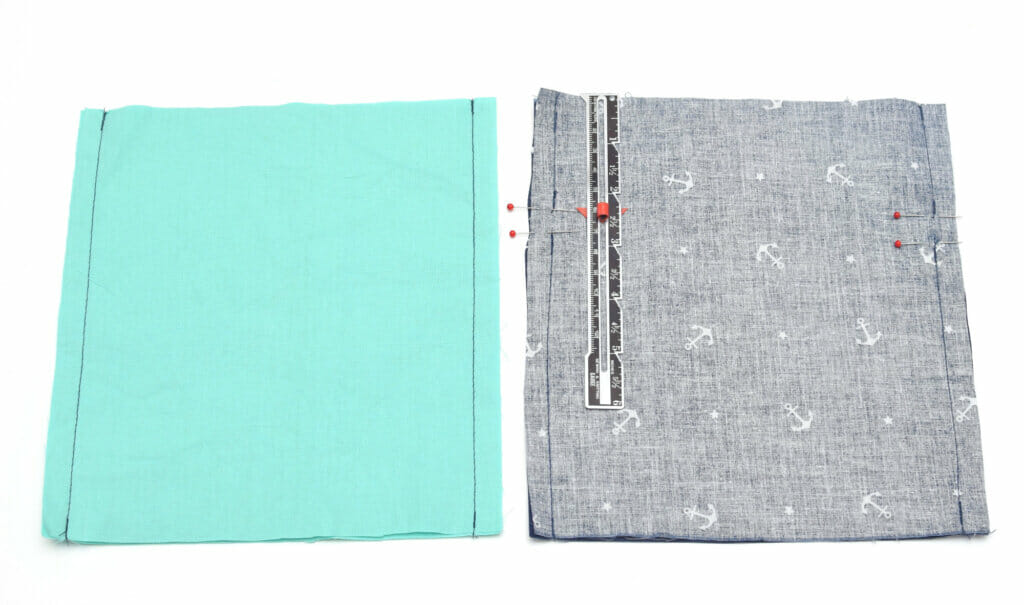
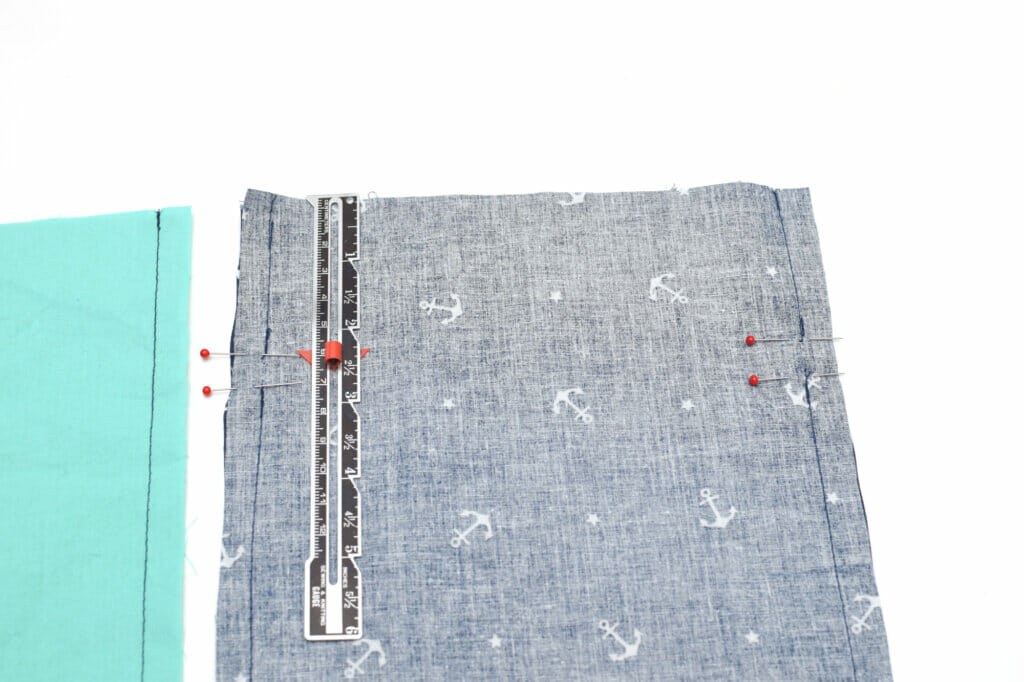
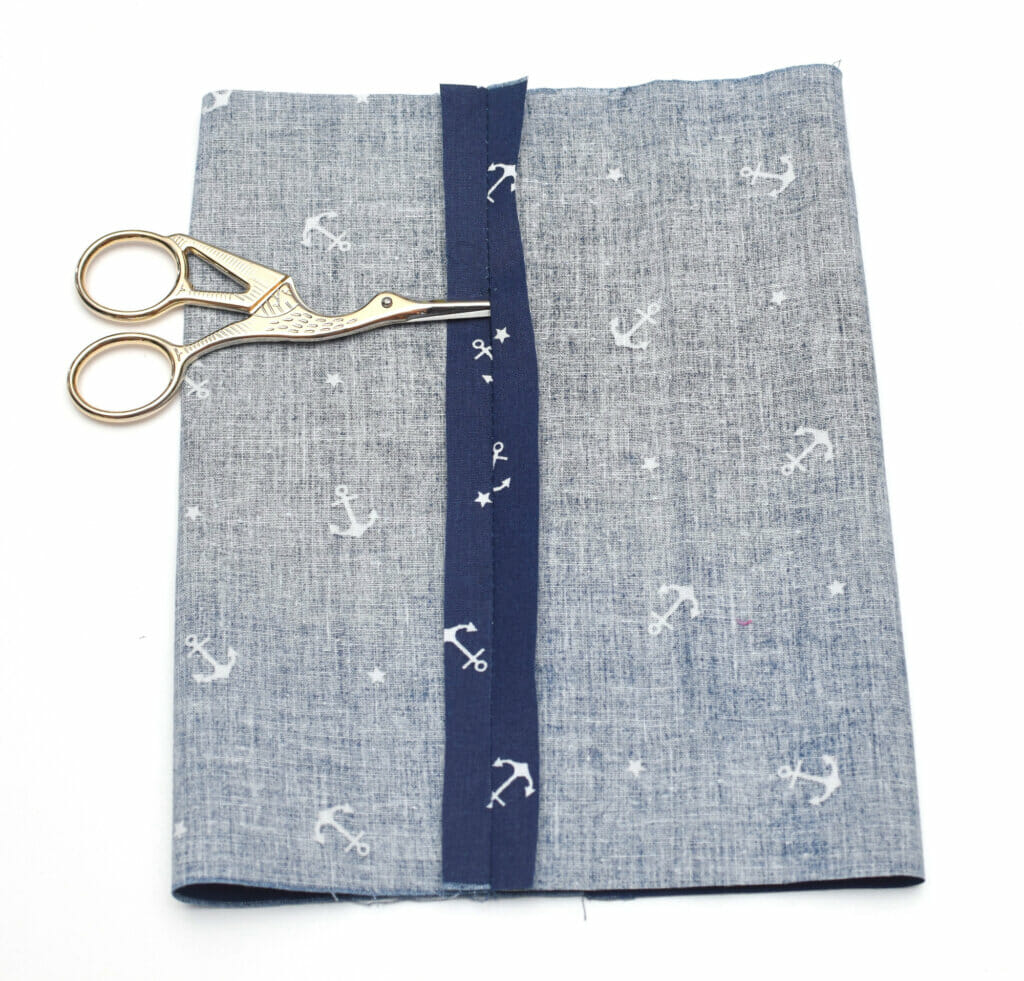
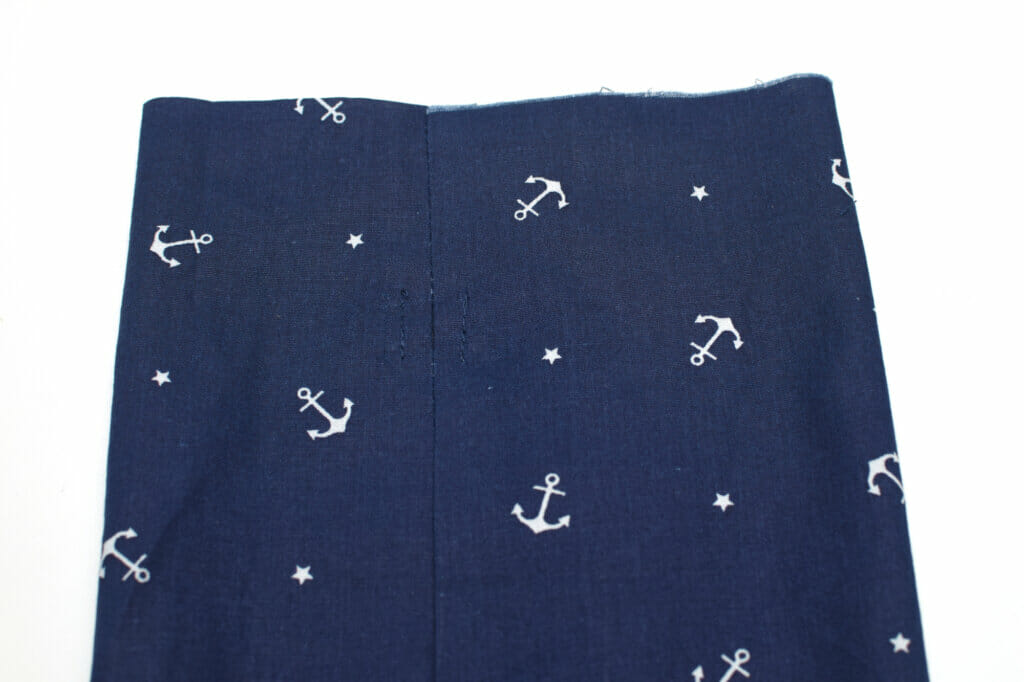

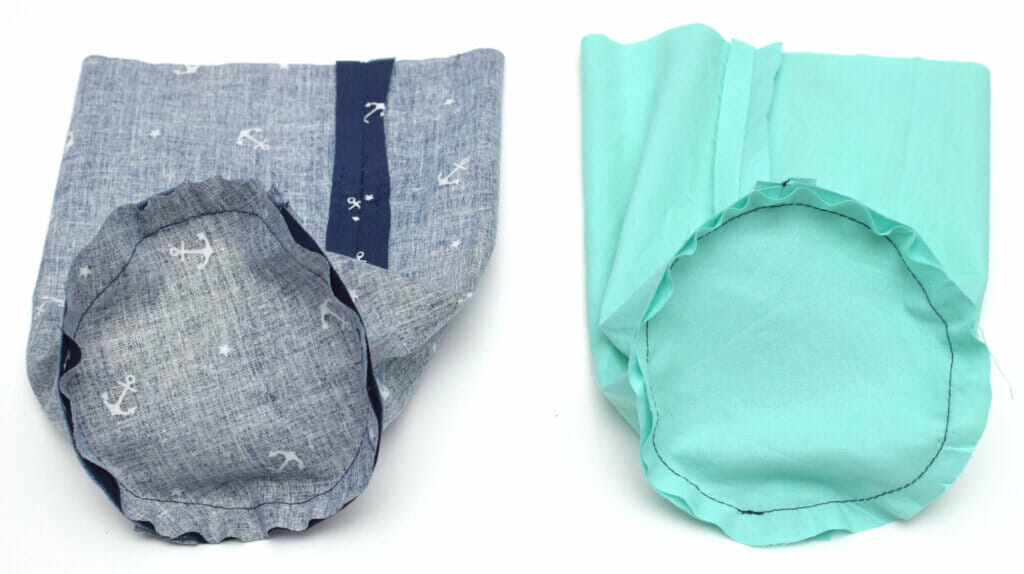
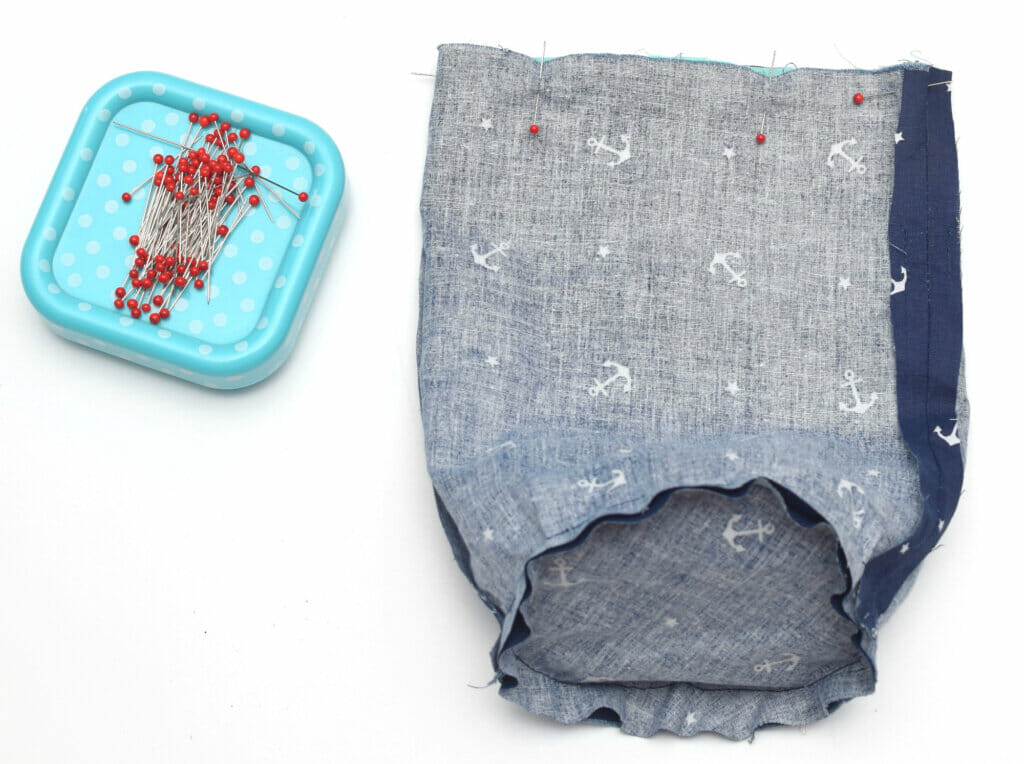
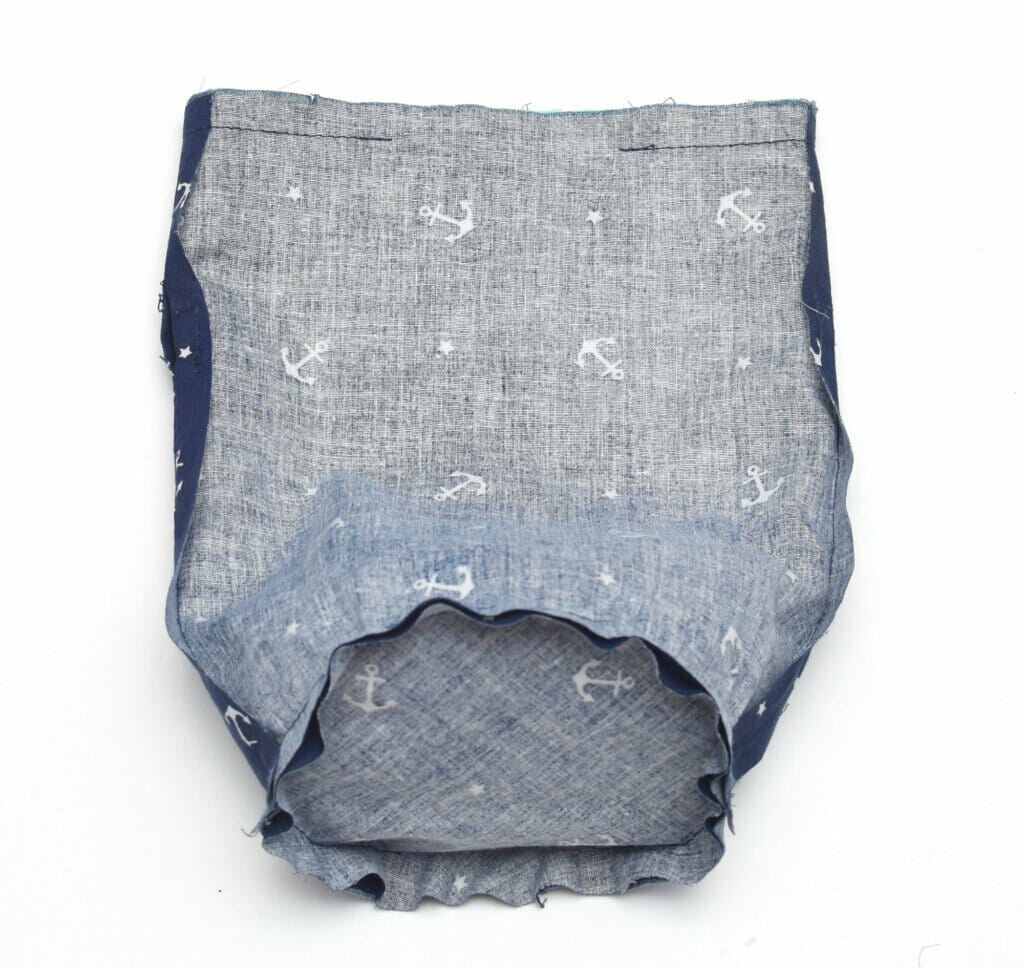
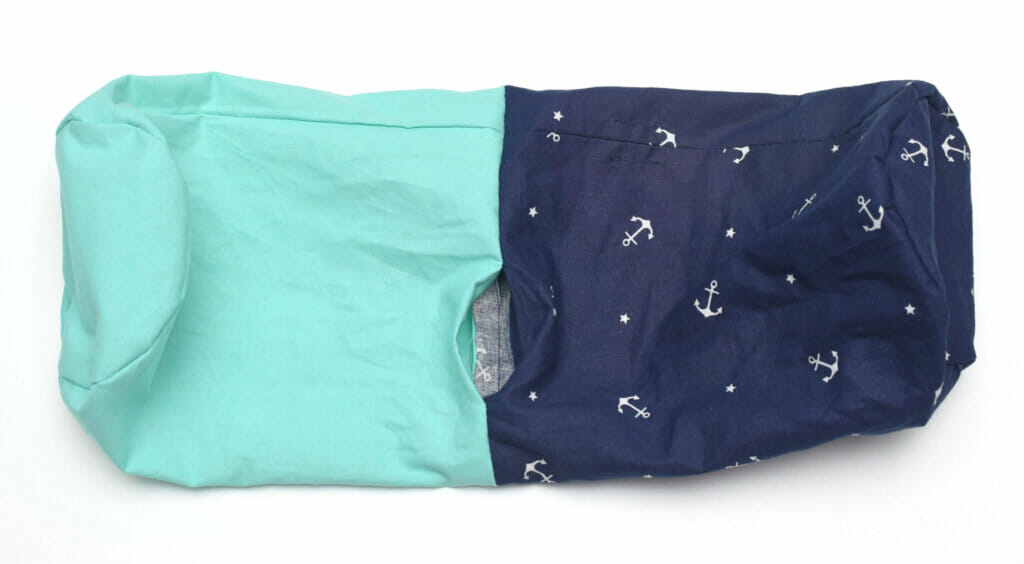
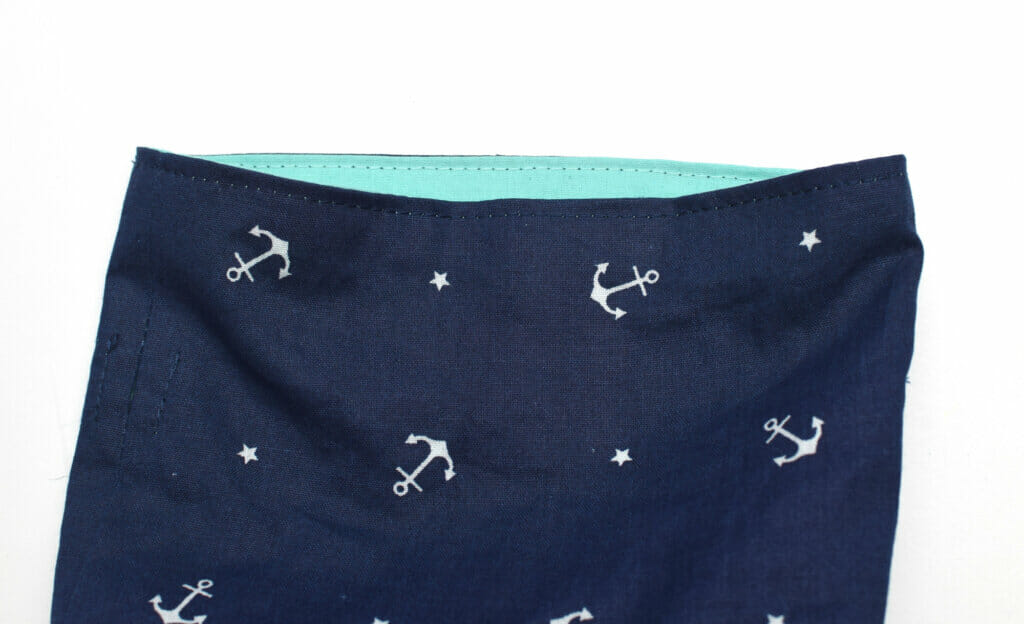
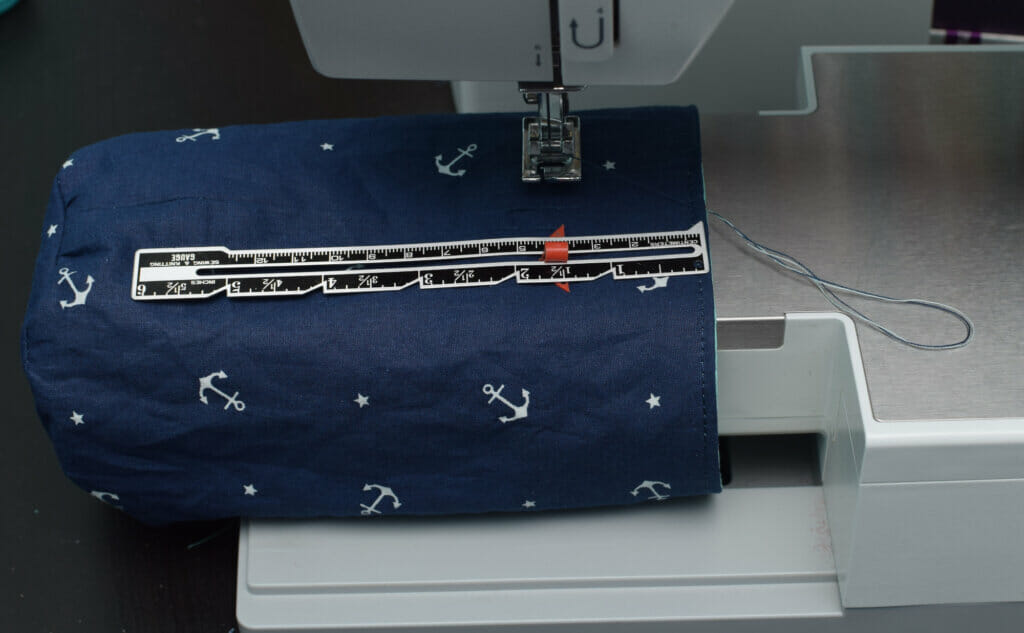
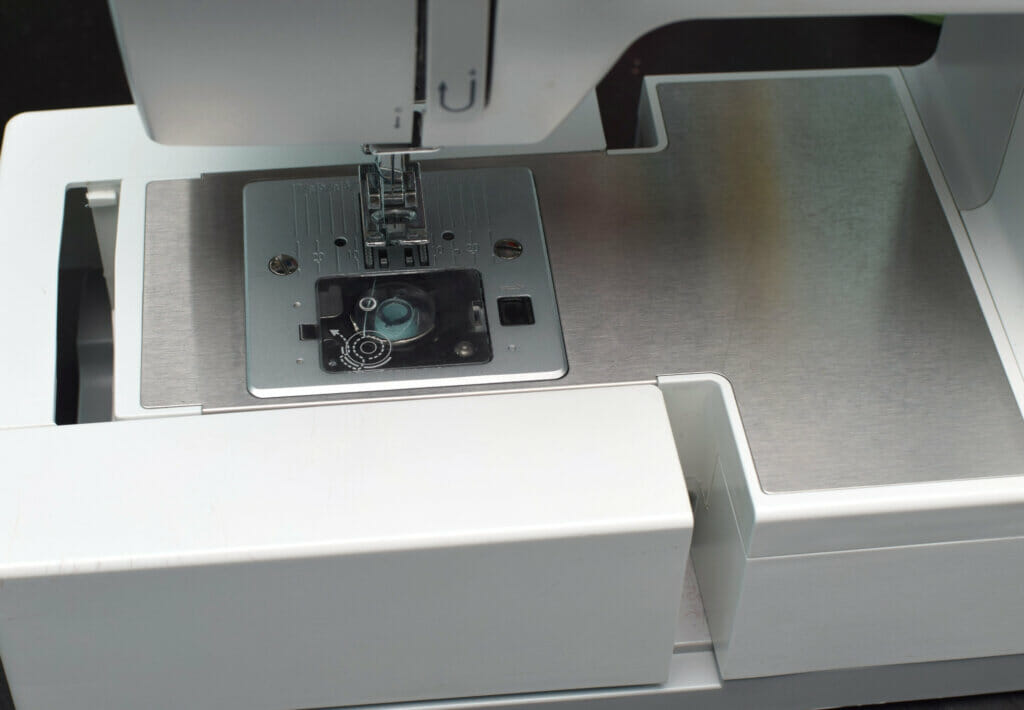
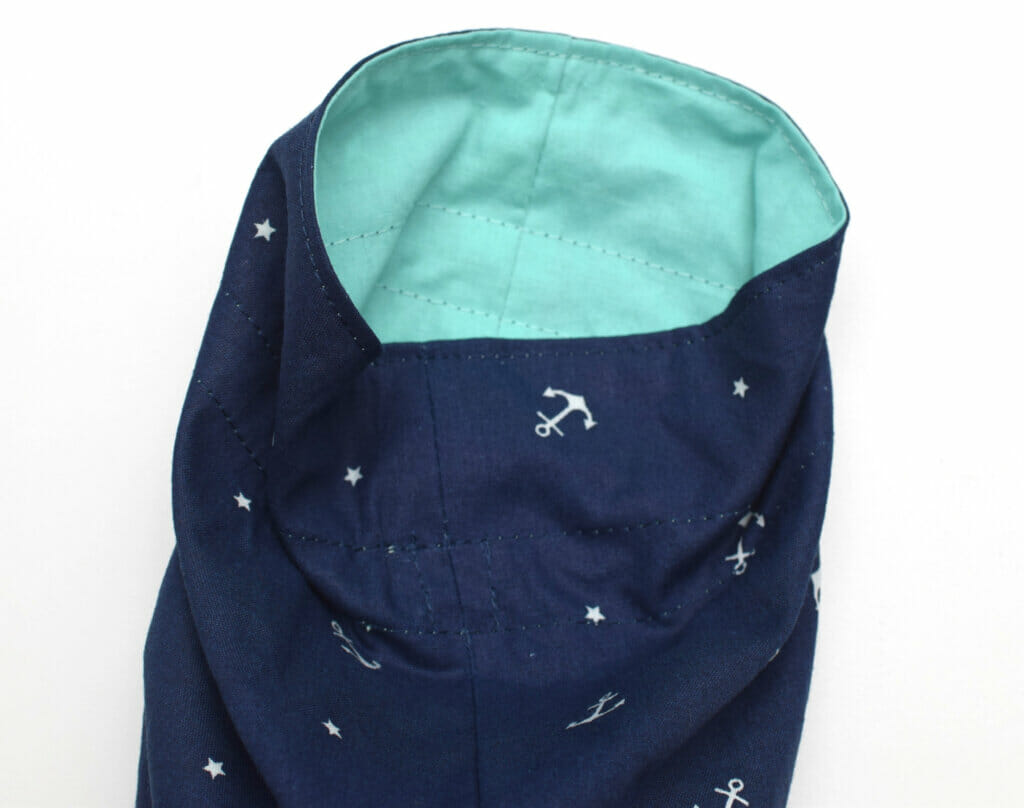
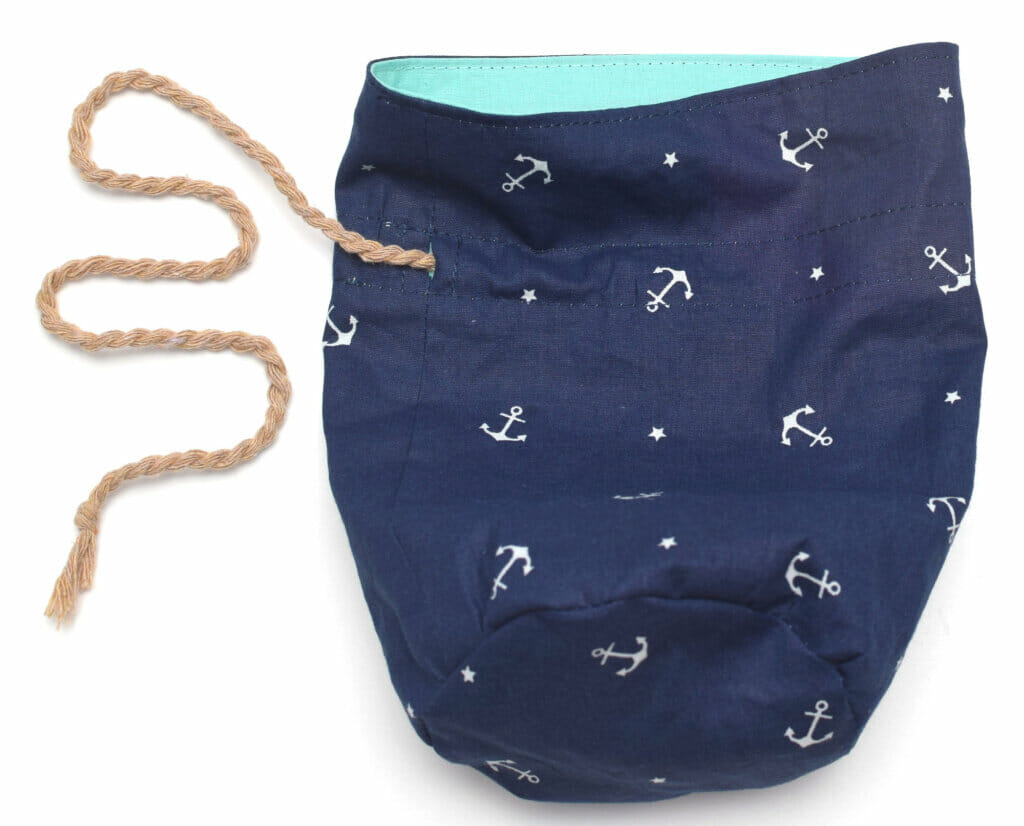
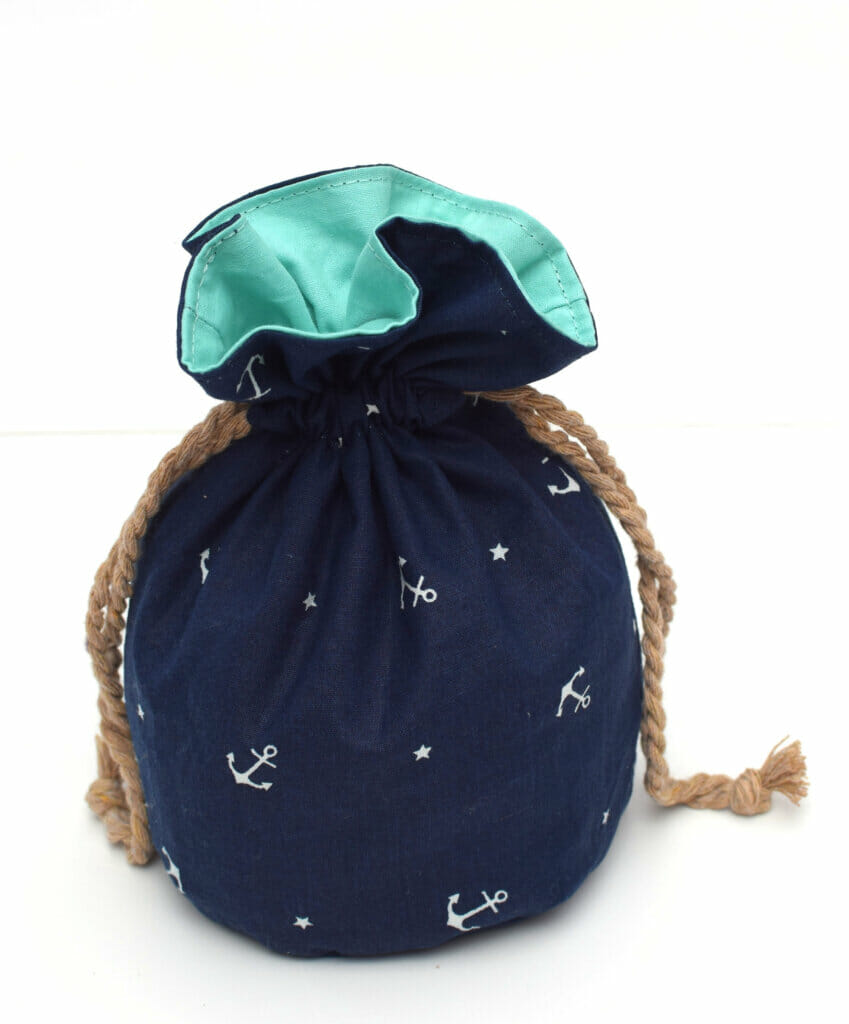
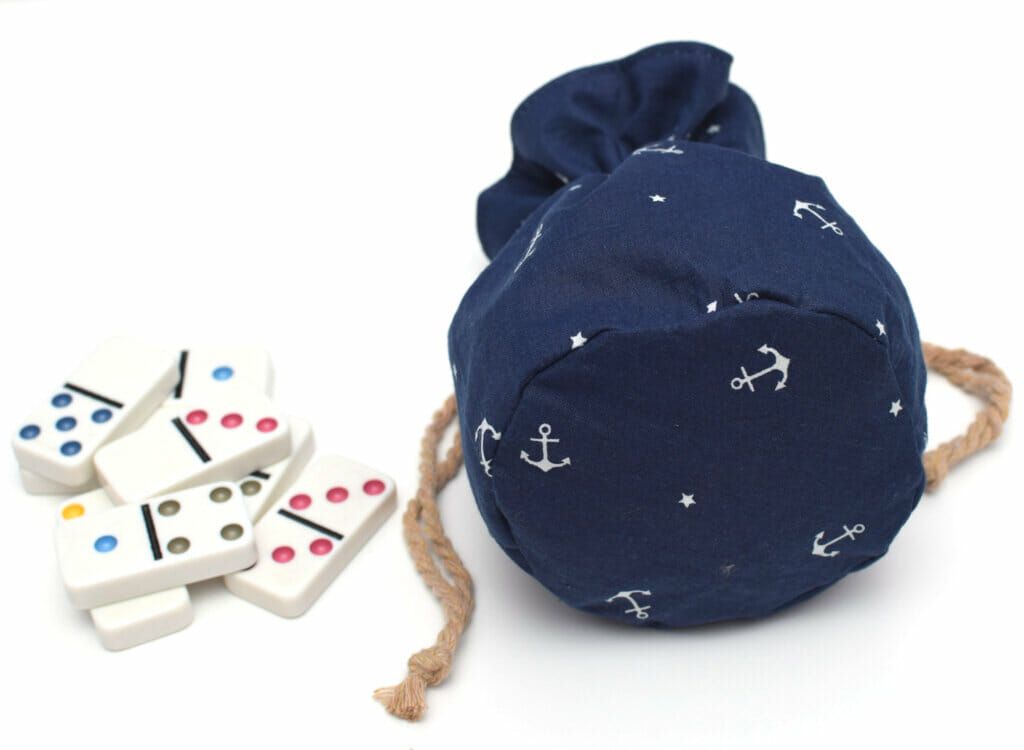
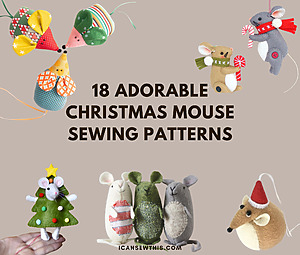
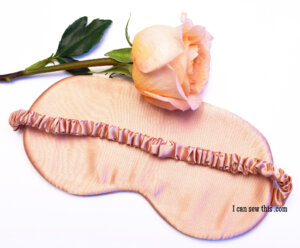
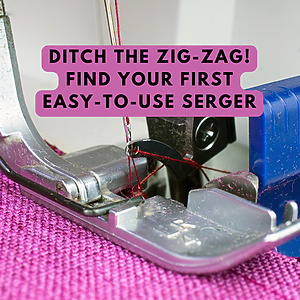

Thank you so much for these instructions!
I made a dice bag for myself and another one for my girlfriend and they are just so cute !
thank you for this tutorial!
i made a basic lined drawstring bag last week and want to level up to one with a round bottom. i will try this one soon!
i’m wondering if i could leave the opening for turning the bag around on the bottom of the lining instead, so the top stitch is more discreet at the bottom of the bag in the end?
Hi Violet, thanks for posting this! I’m a relatively inexperienced sewist and I’m excited to try this pattern.
Could you clarify how the opening 2 1/2 – 2/ 3/4 in from the top of the bag relates to the channel for the cord that is 1 1/2 – 2 1/4 inches from the top of the bag? It seems like those two areas wouldn’t overlap…Does the top of the bag get closer to the opening due to connecting the lining to the main fabric?
Hiya! I think the commonality between the 2 measurements is that the first set given (~2 3/4) is before sewing in the other seams. After accounting what you lose from seam allowance, it’s drops down to the other measurement (~2 1/2 “depending how big your cord is”)
Hope this makes sense!
great guide! made a beautiful and sturdy bag! will be making one for everyone on the table
I am going to use this pattern for holding potatoes during our Raclette dinners. It will need to be a little bit larger but your instructions will help me make one. Thank you!
Hi. What do you mean by “right sides together” in step 5? What is “right” supposed to mean. I have both the main fabric and the lining ready to go for the step, but I don’t understand which way the lining goes in.
Hi Lindsey,
The right side of the lining has to touch the right side of the main fabric at Step 5. In the end, when the bag is finished, both fabrics (main & lining) will be visible from the outside.
Think of “right” as in “right and wrong”. Not left and right. Another way to think about it is “pretty” and “ugly” sides. Your “right/pretty” side will be the side with the pattern you want to be seen. (As this is a layered piece) the “wrong/ugly” side will not be visible even from inside the bag if you do it correctly.
Hope this makes sense!
This is helpful. As a beginner I was thinking left and right but now I understand you mean inside outside or good side bad side, essentially.
So dumb question, but do you sew around the whole bag (main fabric) where the drawstring goes, if you don’t, wont the drawstrings just go anywhere?
Hi Christina,
There is no such thing as a dumb question!
At Step 8, I sew around the whole bag, through both main fabric and lining, to make a casing for the drawstring cords. If I skipped that, I think the overall result would be subpar – aesthetically and functionally as well.
This was my very first sewing project on my very first sewing machine and I wanted to say thank you for making this so beginner friendly! I only had to redo one part (misunderstood how the lining was to fit into the outer fabric and had to fix that) but overall very pleased with this tutorial and now this beginner has a gorgeous dice bag for D&D games ☺️
I may be stupid, but how do you measure .17 or .31 of an inch?
Hi Lee,
This is a great & valid question, sorry for responding so late!
So, here’s why I used these odd numbers 8.17″ and 11.31″ >> my starting point for each bag is always the bottom circle – 5″, 6″ etc. When I do the math, it’s almost impossible to get nice round numbers for the bag walls.
I’m not a big fan of the imperial system and I’m actually using the metric system in my home country, but I’m writing these tutorials for English speakers – the vast majority of them use inches to measure things.
So here are your options:
1. convert 8.17″ into cm (use Google) you’ll get 20.75 cm.
2. convert decimal to inch fractions (use this site https://www.inchcalculator.com/inch-fraction-calculator/ or another) 8.17″ = 8 11/64″ (this 11/64 fraction still confuses me…)
Hope this helps! 🙂
Violet
It is only Americans who are English speaking and imperial using… Do everything in CM, it makes more sense 🙂
Canada went metric in 1975. As far as sewing is concerned, I can do both. I’m 72 and sometimes I forget that anyone born 1975 and later have no idea what an inch is. Of course, you can really confuse them by asking to get a “yard”.
I made a bag with this pattern back in January (before I even got the dice I made it for) and it was great to work with! I’m planning on making another (or a few) soon. Thank you for sharing the pattern!
I thought I might suggest a 1” square on the pdf for scale. The circle I printed was 4.5”. I broke out the compass and made one that was 5”. though.
Also, my fabric is sideways because I cut it with the pattern facing up along the length of it. But then you sew the sides of the width so everything is on it’s side.
Hi Katrina,
Thank you for your feedback and sorry for the late reply! I checked the circle pattern and indeed it was a bit off. I revised it and it should be fine now. Unfortunately, I don’t know how to add a 1” square on the pdf for scale… I also use the compass on a plain A4 sheet, then scan it & upload it here.
The link doesn’t work to download the circle.
You were right, Nikki, there was a problem with the link. I fixed it, now it works. Thank you!
Mine still prints at 4.5 inches. Can you share the math you used to determine the sides of the rectangles? I don’t have a compass
PSA: don’t use satin fabric. unless you’re very good at sewing.
I’m not exactly a noob, but trying to do this with satin made me give up.
also, note to self. DO measure PROPERLY.
Hi Niky,
Your comment is so funny. :)) I’m not a noob either, but I will still fail at this and that from time to time.
Yes, sewing this drawstring bag with satin is harder – but if you add fusible interfacing to the satin outer layer, it gets much much easier.
Have a nice day! 🙂
the tutorial for the free drawstring bag does not show the photographs.
Hi Violet,
I don’t know why, but half of your pictures won’t load for me here, so I’m having trouble making sense of one thing. For dimensions you specify 4 rectangles measuring 8.17 inches in width by 8 inches in length…then you say if we want to change how short or tall the bag is, just to adjust the height of the rectangles’ length. So the 8” side. However, it seems to me that unless I’m misunderstanding…that’s the side that gets sewn to the circle, so the circle’s diameter would change as well. Because the long side (8.17”) that you call the width seems to me to actually be the HEIGHT of the bag where the length, as you call it, is actually the width.
Again, the pictures are all broken for me so reading comprehension might be to blame. 🙂 I just decided I wanted my bag to be a little squatter, so following your directions, I took an inch off the 8” length…and now that I see that’s the side that’s supposed to match up to my circle, the dimensions are all wonky. So is it possible I should have actually taken an inch of the long side (8.17” that you call the width above), instead of the 8” side you called the length?
Yep! I think you’re right, Courtney. I am pretty meticulous in my cutting and I had a few small puckers in the bottom of my bag because I only read how to cut the rectangles paying close attention to the width/height labels. But I didn’t closely read, “Now, place the lining pieces with the right sides together and sew along the long side (8.17 inches) with a 3/8″ seam allowance.” You are so right!! That is the HEIGHT!! Thank you for your post.
Great pattern, though, Violet!! And thanks for the photos and instructions. I love my little bag!
I did the same thing- I wanted my bag to be not as tall so I changed the 8’ measurement to 6.5 and now my circle doesn’t fit. Time to get out the seam ripper?
If I want to make it even bigger than the 7″ diameter circle, how do I determine the size of the rectangles in relationship to the circle?
Hi Marilyn,
Good question. I think it deserves a whole new post rather than just a short reply here. What do you have in mind, what do you need a big round bottom bag for? And how big? As you can see, I’m conducting a mini-research here, lol.
Thank you!
Did you ever make a separate post for this? I wanted to try making bags of various sizes, both bigger and smaller, and wanted to know the math I should do.
Thanks!
Hi Melody,
I haven’t got my hands on that post just yet, but it’s been bouncing around in my mind for a bit now. Once I get all cozy in my new home (in ~2 weeks, I hope), you can bet I’ll put those thoughts into words! I’ll drop another comment here to let you know when it’s live.
Thank you!
Hi Marilyn, so if we go by math, you’d need to find the circumference of whatever sized circle you want. So a 10″ diameter circle’s circumference is 62.83 inches (this is the bare minimum to get around the circle). divide that by 4 for the width of the rectangles and then add your seam allowance (I rounded up by .02″ in my calculations because I thought 16.08″ might be hard to measure). You’d make the rectangles as tall as 62.83″/4 without the added seam allowances and rounded to the nearest whole number I believe. Sooooo your rectangles would be 16.1″W x 16″T for a bag with a 10″ bottom circle. You can find circumferences here: https://www.google.com/search?q=circumference+of+a+circle&oq=circumference+of+a+&aqs=chrome.0.0i457j69i57j0l6.4641j0j7&sourceid=chrome&ie=UTF-8
From the pictures it looks like you leave open for the drawstring opening at 2 1/4 and 2 3/4. Not 2 1/2 and 2 3/4
Good observation, thank you! It looks like a typing mistake, I’m sorry – I already fixed it. Thank you again!
In truth, where you place that drawstring opening can vary a little, depending on how you want the top of the bag to look like and how wide your cords are.
Great! I like sewing. What a great idea. Will surely try as I have got so many left over cloth.
Thank you.